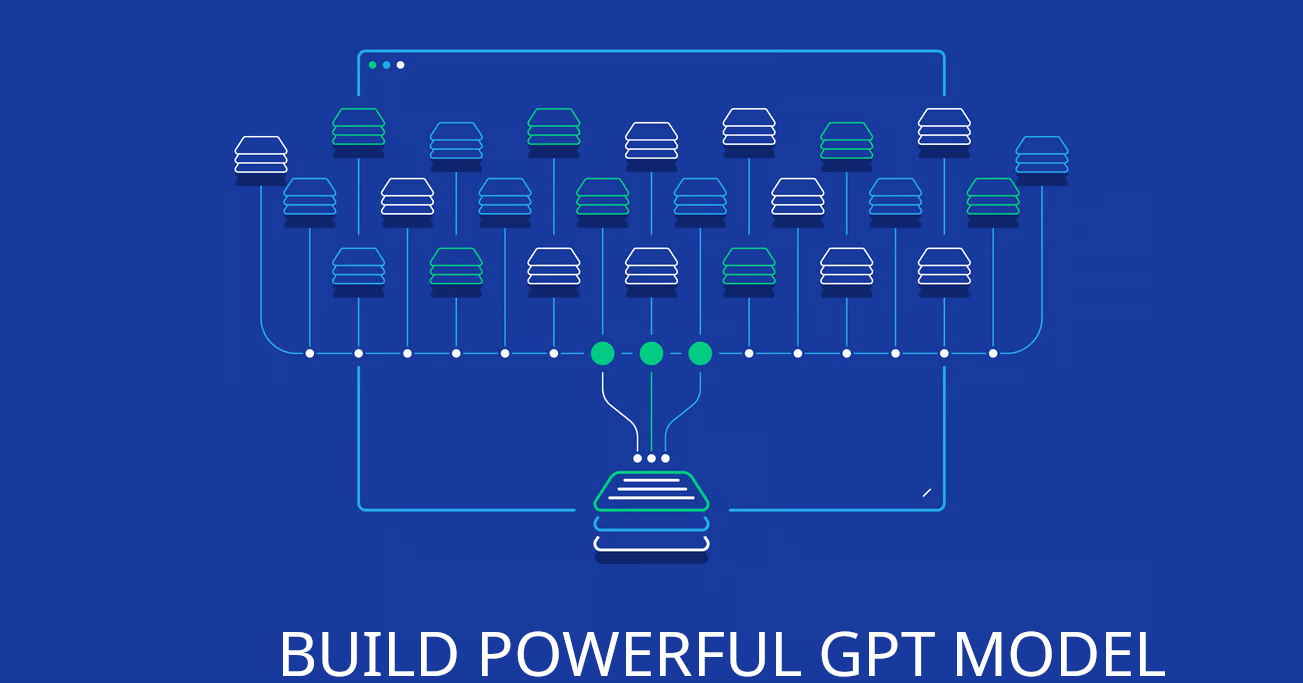As artificial intelligence technology continues to advance, the demand for sophisticated natural language processing (NLP) models like GPT (Generative Pre-trained Transformer) has grown significantly. A powerful GPT model can be a game-changer for businesses, but building one requires a well-thought-out process. In this article, we’ll go over the steps involved in building a powerful GPT model.
Gather Data:
The first step in building a GPT model is to gather a large corpus of text data. This corpus should contain examples of the type of language that the model will be expected to process. The larger the dataset, the better the model will perform, but be sure to focus on quality data rather than quantity. The data should be preprocessed and cleaned before feeding it to the GPT model.
In addition to selecting a large and high-quality corpus, you should also consider the diversity of the data. The dataset should contain a wide range of language styles, topics, and domains to ensure that the model is robust and versatile. You can use various sources such as news articles, social media posts, web pages, and scientific papers to collect the data.
Preprocess Data:
Preprocessing data is an essential step in building a GPT model. This step includes removing any unwanted text or formatting from the dataset, tokenization, and encoding. The encoding process converts text data into numerical vectors that the model can process. This step also includes normalization, such as converting all the text to lowercase or removing stop words.
Tokenization is the process of breaking down the text data into individual tokens or words. You can use various tokenization methods such as word-based, character-based, or subword-based tokenization, depending on the language and type of text data. Encoding involves converting the tokenized text data into numerical vectors that the model can process. There are various encoding methods, such as one-hot encoding, word embeddings, or byte pair encoding (BPE).
Train the Model:
Once the dataset is preprocessed, it’s time to train the model. This step involves setting up the GPT model architecture, which includes deciding on the number of layers, the number of neurons in each layer, and the number of attention heads. After setting up the architecture, the model is trained on the preprocessed dataset.
The GPT model architecture consists of a multi-layer transformer-based neural network. The number of layers, neurons, and attention heads affects the model’s performance and the amount of computational resources required for training. You can use various optimization algorithms such as stochastic gradient descent (SGD) or adaptive moment estimation (Adam) to train the model. Training a GPT model can take a significant amount of time and computational resources, so it’s essential to use hardware accelerators such as graphics processing units (GPUs) or tensor processing units (TPUs) to speed up the process.
Fine-tune the Model:
Fine-tuning the model involves training the model on specific tasks or datasets. This step is crucial for improving the model’s performance in specific areas. For example, if the model will be used for sentiment analysis, fine-tuning the model on a dataset of sentiment-labeled texts can significantly improve its performance on this task.
Fine-tuning can be done on a smaller dataset than the original training dataset, and it typically requires fewer epochs to achieve good performance. Fine-tuning can also be done using transfer learning, which involves using a pre-trained GPT model and adapting it to a specific task or domain.
Evaluate the Model:
Evaluating the model’s performance is a critical step in building a powerful GPT model. The model should be evaluated on various metrics such as perplexity, F1 score, and accuracy. This step helps to identify areas where the model needs improvement and make adjustments accordingly.
Perplexity is a measure of how well the model predicts the next word in the sequence. F1 score measures the model’s precision and recall for a specific task, while accuracy measures the model’s overall performance. You can use various evaluation techniques such as cross-validation or holdout validation to evaluate the model’s performance.
Deploy the Model:
After training and evaluating the model, the next step is to deploy it for use. The deployment process involves integrating the model into a software system or application, such as a chatbot or language translation tool. The deployment process should be optimized for performance, scalability, and reliability.
You should also consider the model’s ethical implications when deploying it. It’s important to ensure that the model doesn’t perpetuate harmful biases or perpetuate discrimination. You should also consider privacy concerns when deploying the model, such as how user data is stored and processed.
Update and Maintain the Model:
Finally, it’s essential to update and maintain the model regularly to ensure that it continues to perform well. This step involves monitoring the model’s performance and making adjustments as needed, such as fine-tuning the model or updating the dataset. It’s also important to keep the model up-to-date with the latest advancements in GPT technology and research.
Conclusion:
Building a powerful GPT model requires careful attention to each step of the process, from gathering and preprocessing the data to deploying and maintaining the model. By following the steps outlined in this article, you can build a robust and versatile GPT model that can be used for a wide range of applications, from natural language processing to chatbots and language translation.



